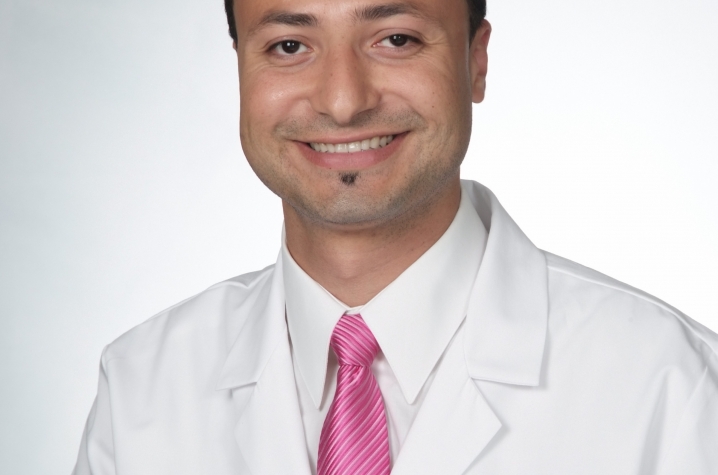Fibroids Are Common Problem for Women
This column appeared in the March 30, 2014 edition of the Lexington Herald-Leader
LEXINGTON, Ky. (April 1, 2014) — Uterine fibroids are very common, occurring in as many as 50 percent of women in their reproductive years and up to two-thirds of women by the time they go through menopause. While many fibroids cause no problems and require no treatment, for some women they can cause serious quality-of-life issues.
What are fibroids?
Fibroids, also known as "leiomyoma," are tumors that grow in the wall of the uterus. These tumors are almost always non-cancerous, but very rarely, they can resemble a uterine cancer, known as a leiomyosarcoma.
Though the vast majority of fibroids are benign, they can still cause many problems for women, including heavy, painful bleeding, bulk symptoms such as bladder or rectal pressure, and frequent urination. They can also be associated with infertility and complications of pregnancy.
What causes fibroids?
The exact cause of fibroids is unknown, but the hormones estrogen and progesterone seem to play a role in their growth and development.
In addition to a woman's age, there are other risk factors for developing fibroids. If a woman's mother had fibroids, she is more likely to develop them herself. African-American women are more likely to have fibroids that cause symptoms, and women who are overweight or who have never had children appear to be at a higher risk as well.
How are fibroids treated?
Not all fibroids need to be treated. In general, fibroids should only be treated when they are causing symptoms described as above. Some symptoms, like heavy or painful bleeding can be treated with hormonal therapy, but fibroids are most commonly treated with one of the following procedures:
A hysterectomy is the complete removal of the uterus. The most common reason hysterectomies are performed is to treat a fibroid problem. With less invasive procedures such as vaginal or laparoscopic hysterectomy, pain and surgical risk are reduced, and patients usually leave after spending fewer than one day in the hospital. However, a hysterectomy is still a major surgical procedure and requires general anesthesia.
A myomectomy is the surgical removal of fibroids from the uterus. This is the most popular option for women who are planning to become pregnant in the future. This procedure can also be performed with a minimally invasive approach. Patients' blood loss is significantly reduced with a laparoscopic surgery, and these procedures can be performed as outpatient surgery; patients can often go home the same day.
A uterine fibroid embolization (UFE) is a non-surgical procedure that blocks the blood flow to fibroids, which in turn causes them to shrink. This procedure has no blood loss, it only takes a few hours with minimal recovery time. No general anesthesia is needed and it does not leave any scars. A UFE is preferred for women who are not planning for a future pregnancy and who have not yet reached menopause.
Dr. Driss Raissi is an interventional radiologist and Dr. Mark Hoffman is a gynecologic surgeon for UK HealthCare.






